Icy Inverts Cruise 2013 - Shipboard Blog - Feb 7th to Feb 11th
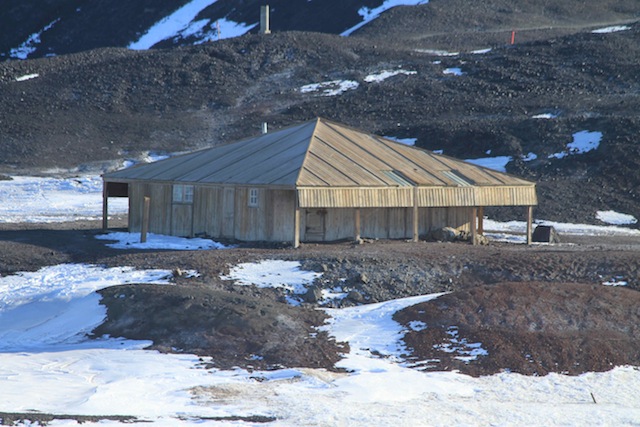
11 February 2013 - McMurdo Station
Although only at McMurdo Station for a short time, we have been busy seeing the sights. Once we moved into our McMurdo rooms on the 10th, we finally had some free time. One of the first places visited was the station store to buy souvenirs to take home. Unfortunately, the pickings were very slim as it is the end of the McMurdo season and because the big C-17s were not able to land and resupply to the store. McMurdo Station shares Ross Island with a New Zealand scientific base. Some of our group took a shuttle over to the New Zealand base and found a much more amply supplied store.
In addition to visiting the “Kiwi” base, we took a tour of “Scott’s hut” (above picture). Sir Robert Falcon Scott was a British explorer who was involved in the race for the South Pole in the early 1900s. Scott, who eventually lost out to the Norwegian Ronald Amundsen and died in his tent on the return trip, had used Ross Island for a staging area and had built a small hut here for supplies. Over one hundred years later, the hut is still in amazing shape and many of the supplies the expedition used can be seen. For example, there are creates of dog biscuits and cans of coco powder that are still unopened. Additionally there is still meat hanging and a mummified seal outside the hut. Because the air tend to be very dry and the temperatures are freezing most of the time, the hut and its contents have remained very well intact.
We also were able to take a tour of the main laboratory building at the station. The station is very interdisciplinary in nature, meaning that biologists, paleontologists, volcanologists, and other scientists, all work at the station. Thus, the research building needs to be flexible to accommodate the varying scientific needs in different years. After the tours, some went on short hikes to the top of Ob Hill behind the station or just took walks around the station (below picture).
The one topic that has been central to our stay here is “What is happening with the flight out?”. The planes use the sea ice as a runway. As such, the runway needs to be very cold, and hard, for the larger planes to land. By larger planes, I mean a military cargo C-17. When the smaller planes run back and forth to New Zealand, cargo and personnel get backed up because space is more limited. Fortunately, the first C-17 in weeks will land at the ice runway and we should be able to take off. To prepare for this event, we had to take all of our bags up to a check-in building for the flight, and we where weighted with our bags so that the total weight of the plane could be determined. As I am writing this, we are about 2 hours away from being loaded onto buses and driven out to the airport where we will load the plane.
All in all it has been a grand adventure, starting off from literally halfway around the world and now ending with a series of long plane flights to get back home to family. The efforts of all involved have been tremendous. The scientific crew, the ship’s crew, and the ASC team on and off the ship have worked hard and have done an excellent job. But importantly, family and friends also deserve a “thanks-you” for picking up the slack in our absence. Now it is time to get ready to catch a bus…
PS: Come back and visiting in November 2013 for the second Icy Inverts expedition of the year.
Contributed by: Dr. Ken Halanych, Chief Scientist, Schneller Endowed Chair, Auburn University
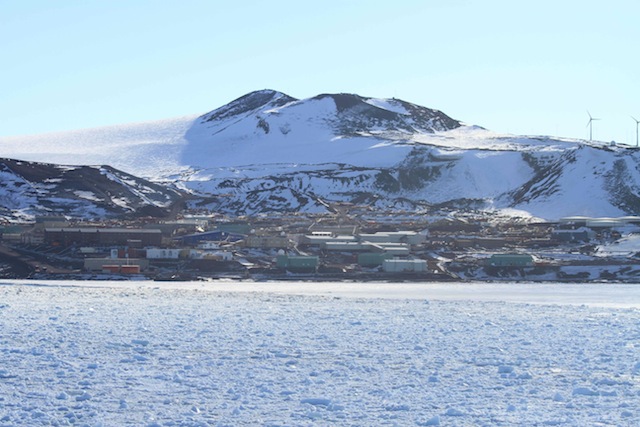
***************************************************************************************
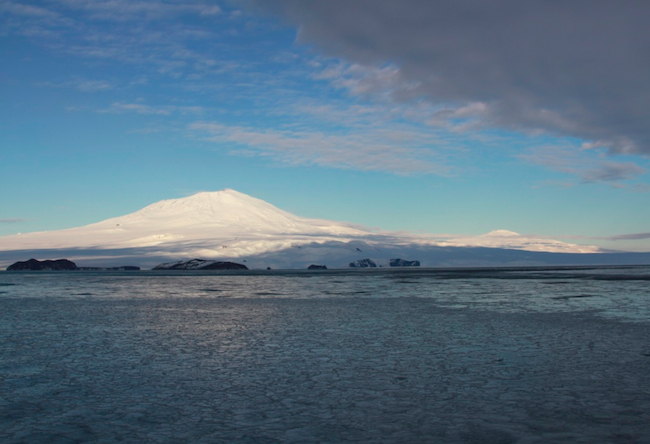
10 February 2013 - McMurdo Station
We arrived at McMurdo Station around midday on the 9th and although the cruise was ‘over’, we still had considerable work to do. For starters, we had to clean the labs and our staterooms, so that the next scientific party can move onto a ship that is ready to go. Perhaps most importantly, we had to pack up and coordinate moving samples from the R/V Palmer to the -80 freezers on McMurdo station. This was no small feat as the samples had to stay at temperature and we had to very full freezers.
Once this was done, we had to be briefed about McMurdo Station and exchange our cold weather gear we received in Punta Arenas for McMurdo’s Cold weather gear. All of us received a pair of wind pants, socks, gloves, hat, and a pair of white rubbery “bunny” boots. We also got ‘big red’, a red parka that is easily the warmest coat I have ever worn. As we were coming into McMurdo, the sun came out and we have had more sunshine in the past two days that we did for the 6 weeks at sea. However, it is also noticeably colder. The air is very dry and one does not notice the cold at first, but if the wind starts blowing….
Getting off a ship after several weeks, one is often struck with different sensations – for lack of a better word. The first is ‘dock rock’, or the sensation that you are still on a moving ship even though you are on firm land. The second leaves you asking “where did all these people come from?”. After seeing the same faces for 40 days, the flood of new ones definitely makes one take notice. McMurdo, although a science station, is a small town with several hundred people, and we have been assimilated into that culture. Every one knows we are from the boat without even asking because we are the new faces in town. This transition is very obvious in the dinning area where, at any one time, there may be 200 people eating.
As for the scenery, it is gorgeous. The station looks out not over the water, but instead over sea ice and is surrounded by mountains on all sides. Importantly, Ross Island, were McMurdo Station is located, is volcanic in origin. Mt. Erebus and Mt. Terror (above picture) are both active volcanoes that essentially make up the two sides of the island. In the Mt. Erebus caldera, there is an open pool of lava which burps every so often, but these mini eruptions usually do not make it out side of the caldera. The beauty of the scenery is accentuated by the sunlight that often causes glints on the sea ice or shadows on the mountains (below picture).
Contributed by: Dr. Ken Halanych, Chief Scientist, Schneller Endowed Chair, Auburn University
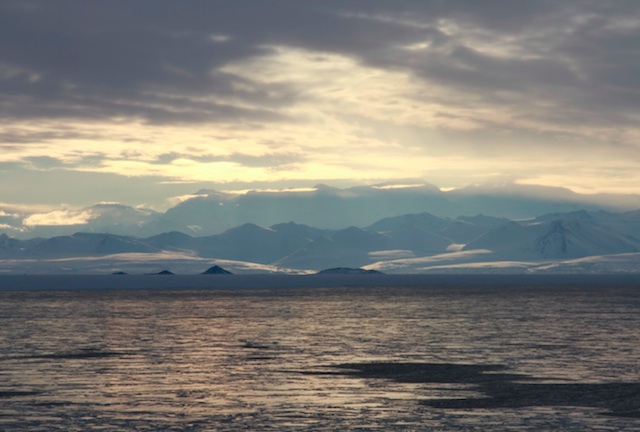
***************************************************************************************
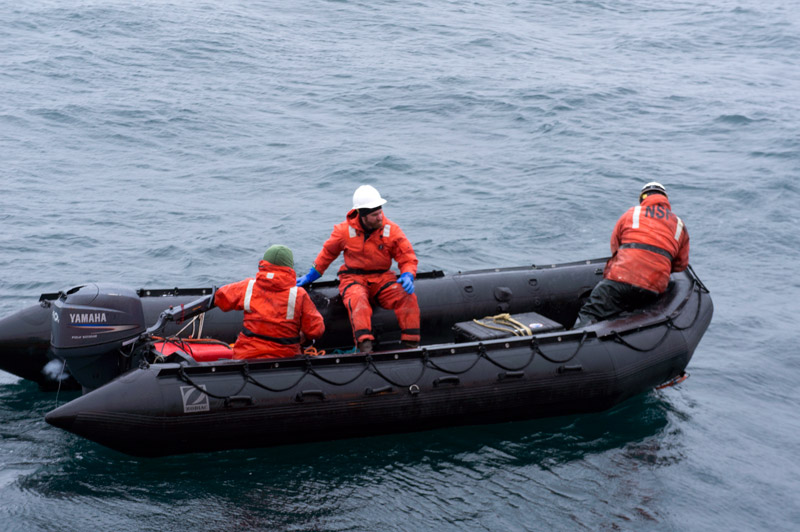
9 February 2013: At McMurdo Marine Station (77° 50.7`S, 166° 39.2`E)
As the past few blogs have mentioned, as we approach the dock at McMurdo and our voyage is coming to an end. It has been an incredible 6 weeks and an experience that none of us will soon forget. Since our last sampling trawl, the team has been hard at work preparing all the samples for shipping and cleaning and packing the labs. Despite all the hard work and chaos of preparing to dock at McMurdo Station, the last two days have provided a few more unexpected experiences.
First, I was fortunate enough to be able to assists with the recovery of a research glider that has been in the Ross Sea since November 21st collecting water quality data for Dr. Scott from the Virginia Institute of Marine Sciences. This required a trip in one of the ship’s zodiacs (above picture)!! It was a little nerve racking to board the zodiac as it involved climbing over the side of the Palmer on a small rope ladder and jumping into a small 12 foot raft as it rose and fell about 10 feet with the waves. Once on board, we had to visual locate the glider, which even though it was about the size of an 8 foot torpedo only had a small orange antennae that was visible above the water (if you look closely you can see it in the below picture). Once located, Marine Tech Rich lassoed the glider and the two of us wrestled it onboard while MT Meredith at the helm kept the zodiac properly position. The ride back to the ship allowed me to get some nice pictures of the Palmer from a different perspective.
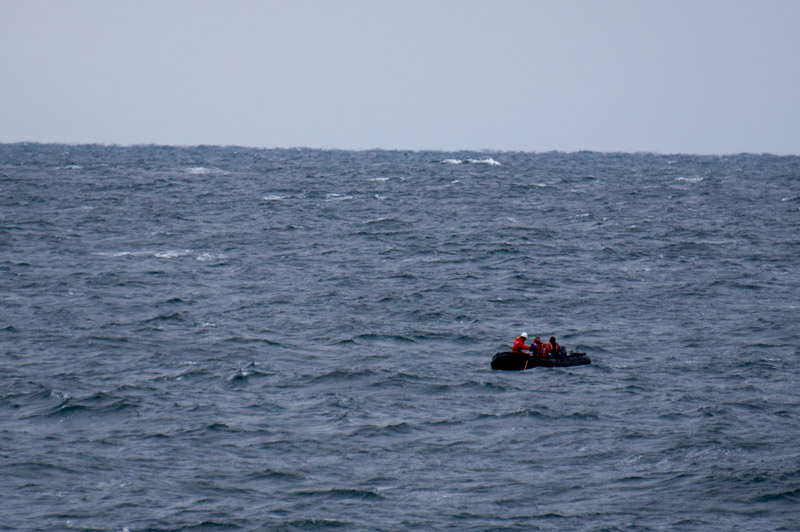
Second, the Palmer got to McMurdo Station area about twelve hours ahead of schedule so before docking, the Captain nosed the front of the NBP into the ice and let the gangplank down for a little “ice party” (below picture). Even though it was past midnight and everyone was extremely tired from a full day of packing, everyone got bundled up in their cold weather gear for a little time on the ice and some great photo opportunities.
We have now officially docked at McMurdo Station and are unloading all the samples and lab supplies. The supplies and samples will make a long journey around the world before ending up back in Auburn while some of the lab supplies will be heading back to Punta Arenas where they will be stored until the November expedition. As far as the research team goes, we will have a day and a half at McMurdo Station then we will be heading to New Zealand for our journeys home. Some people will be heading straight home to much missed family and loved ones while other will are planning on spending some time exploring New Zealand before heading home to see their friends and families. Overall, this has been a very successful research expeditions and I am extremely grateful for having the opportunity to be part of it.
One final shout out to all the people who worked hard work made this happen. The trip benefited from tremendous support from ASC, which helps with logistics and shipboard science. As for the ship and crew, the ECO side, they were also incredibly friendly and helpful. Thank you for a great expedition.
Contributed by: Dr. David A. Weese, Postdoctoral Researcher, University of Michigan
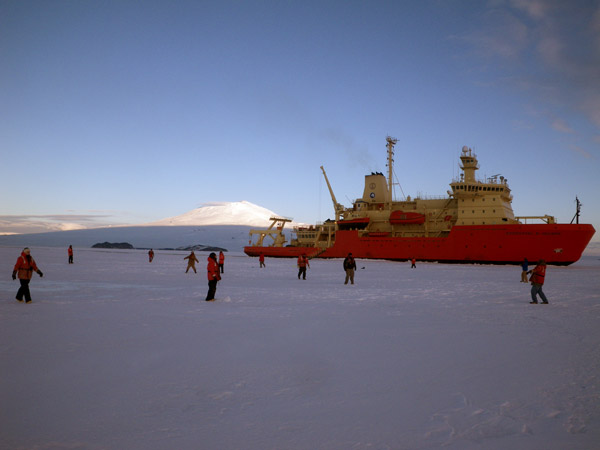
***************************************************************************************
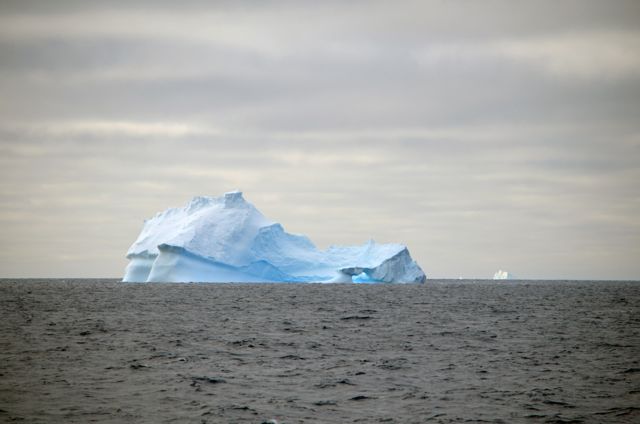
08 January 2013: In the Ross Sea (76° 46.7`S, 167° 41.8`E)
As the trip is winding down, it has become time for reflection and to start the undertaking of packing our lab. I am excited to report that our trip has been very successful; we have been fortunate to collect a very substantial amount of biodiversity on this expedition. These specimens will be vital to our research and expanding the world’s knowledge of phylogeography (that is, evolutionary history in a geographic context) and biodiversity in the Southern Ocean.
Like many others on the ship, while I have really enjoyed myself, I am ready to begin my journey home. While I would love to go back straight home and have my bed back, many of us including myself are going to take the time to do some sightseeing in New Zealand. It will be the perfect way to unwind after a long expedition and it is an opportunity that very few of us are able to pass up. The day when that we are all looking forward to and when all of our hard work really pays off, is when our samples arrive home safely in Auburn, Alabama. These specimens will become the data to our publications and eventually in my case, my dissertation. This is when the real work truly begins and the whole reason why we traveled to the Southern Ocean.
With this being my last blog entry on this research expedition, I look back with slight exhaustion but very fond memories. I am still as amazed with the amount of biodiversity at the end of this trip as I was in the beginning, I still cannot believe how beautiful Antarctica is and I am humbled by the amount of charismatic megafauna that we have had the opportunity to view during this trip. The Southern Ocean is truly amazing, we need to continue to do research here to fully appreciate it and protect it. I am truly grateful for the opportunity to be here and I encourage others to pursue a career in the sciences.
Above and below pictures are of scenery from the last few days. Sure will miss it.
Contributed by: Matt Galaska, Ph.D. Candidate, Auburn University
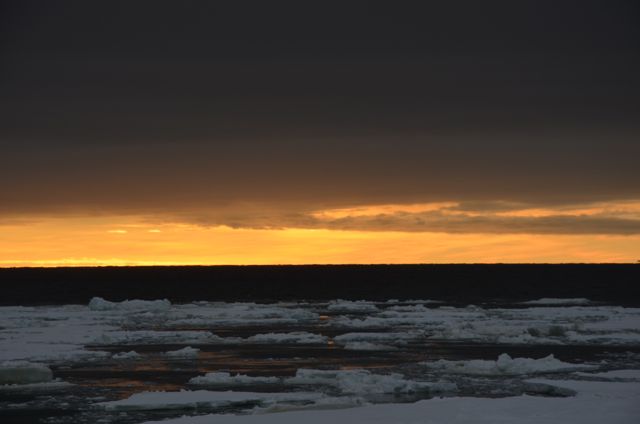
***************************************************************************************
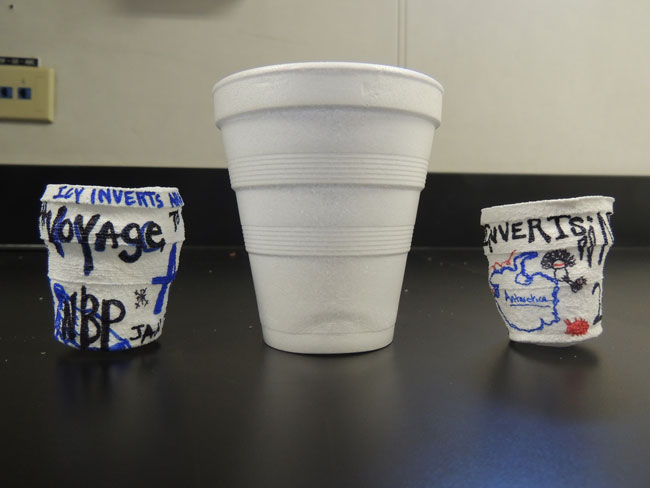
07 February 2013: In the Ross Sea (74° 59.7`S, 165° 44.7`E)
As Andy said yesterday, our journey is coming to an end quickly. It is hard to believe that we have been on the ship for over five weeks and are currently casting our last Blake trawl of the trip. Most of the science crew is up ready to help process whatever the last sample may contain. This reminds me of the first day of sampling, when everyone was so excited to be sampling that even if it was not their shift they were up helping with the work.
After the “day” shift (4AM-4PM) finished processing the second to last trawl this morning, they had a little arts and craft time. They took some Styrofoam cups that they have found on board and decorated them with “Icy Inverts 2013” and R/V Palmer in different color Sharpies. Some people personalized their own cups with their specific study organism or other sayings. These masterpieces were then placed in a couple of bait bags and attached to the Yo-Yo Cam. When the Yo-Yo Cam was deployed, the cups traveled down ~1100m to the bottom of the sea floor with the camera. As the cups descend deeper into the water and the pressure starts to build, the Styrofoam starts to compress and the cups shrink. We end up with small souvenir cups that will remind us of this cruise and provide a good demonstration for outreach programs (above picture).
With another day and a half on the ship we have plenty to keep us busy even though sampling is coming to an end. All the samples we have been collecting over the last several weeks have to be package and prepared for shipment back to the United States. This may seem to be an easy task, but as Kevin pointed out in his January 24 blog post, we have different methods of preserving the animals; therefore, we have to package everything up separately, in the correct containers, and with the correct stickers. We have been trying to pack and organize samples throughout the trip, and after a few minor issues with the initial boxes packed, I think we have developed a system for efficiently packing everything correctly. We have to get all the packing done before the next stop on our journey, the McMurdo Marine Station, where we will disembark the R/V Nathaniel B Palmer. Since there is another science crew in McMurdo waiting to embark on the R/V Palmer to begin their cruise, we have limited time on the ship after we dock. So we have to get everything done before we arrive.
Well, the last trawl is coming up so I should go suit up to head outside. I would just like to take this opportunity to thank Dr. Kenneth Halanych from Auburn University as well as Dr. Jim McClintock and Dr. Chuck Amsler from the University of Alabama at Birmingham for making my involvement in the Icy Inverts 2013 Cruise possible. I am very grateful and fortunate to be a part of this excursion!
Lastly, I would like to give a quick shout out to my dad whose birthday is today. HAPPY BIRTHDAY DAD!!!!! Sorry I could not be there to celebrate with you but I am celebrating in Antarctica for you (below picture)!!!!
Contributed by: Dr. Pamela Brannock, Postdoctoral Fellow, Auburn University
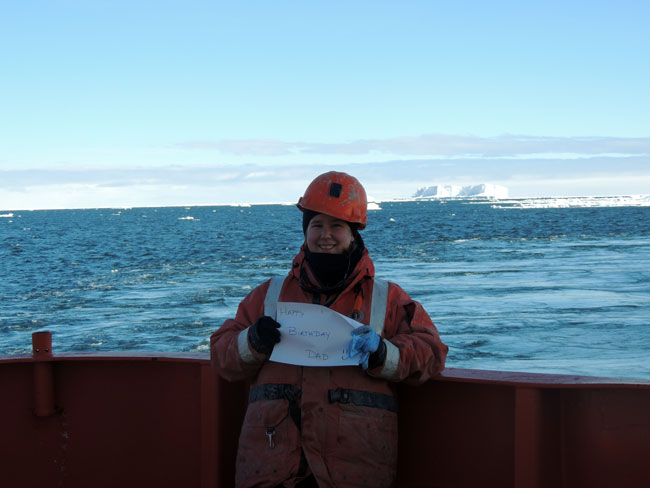
Last updated: 11/12/2013
